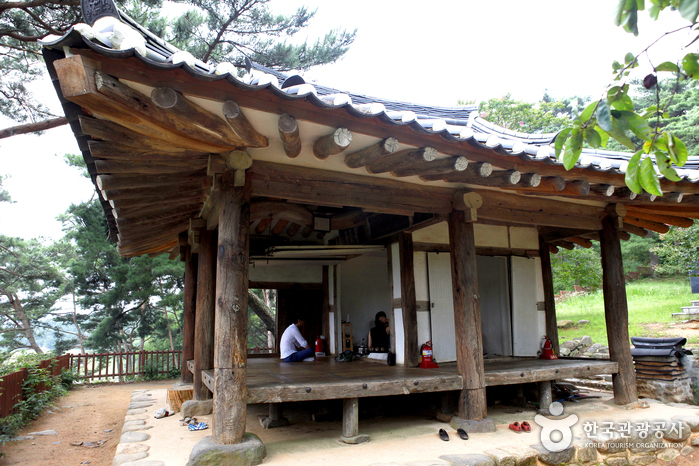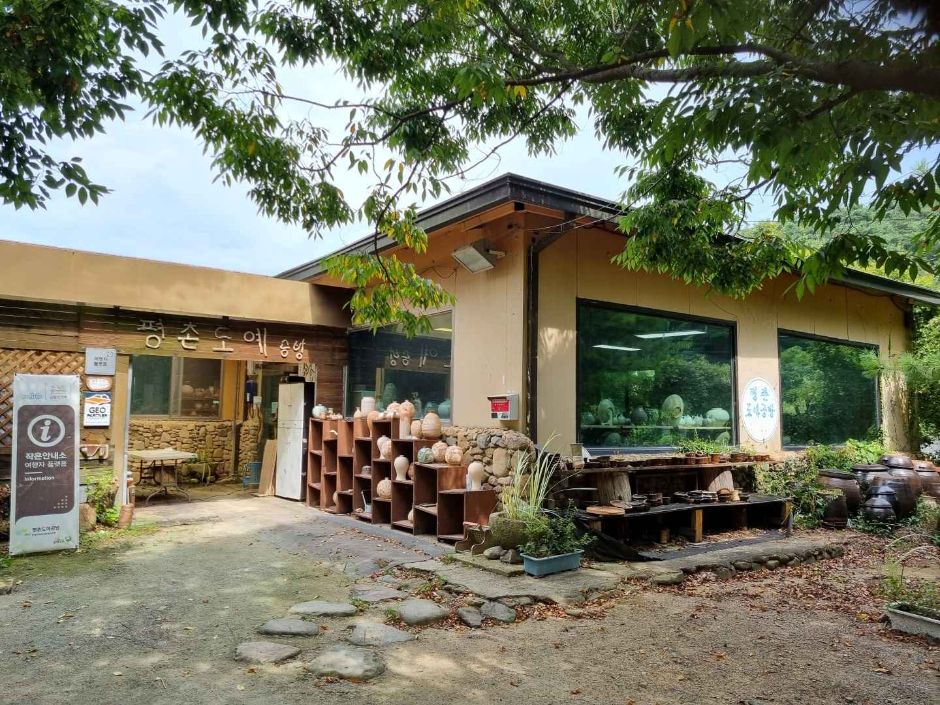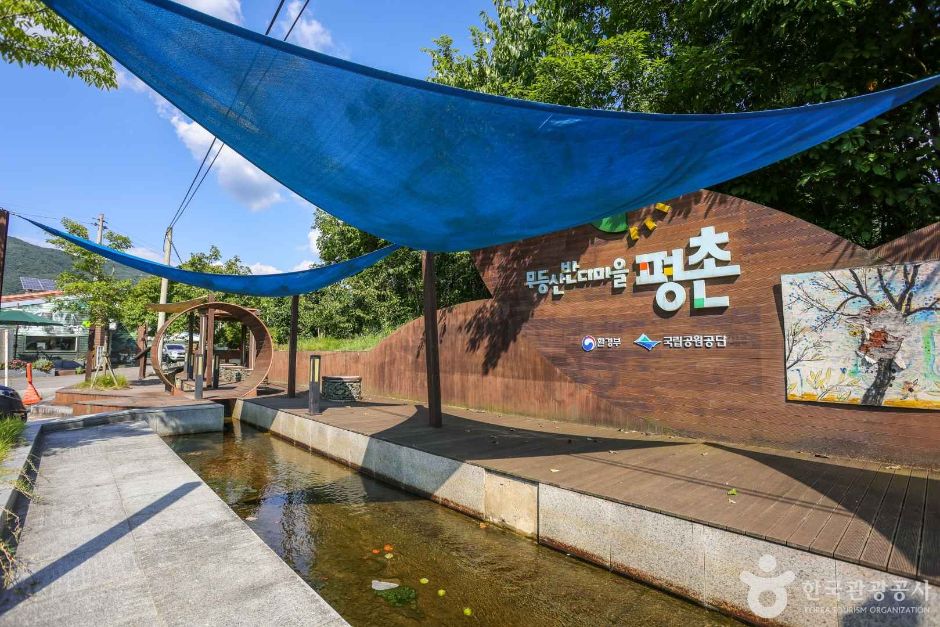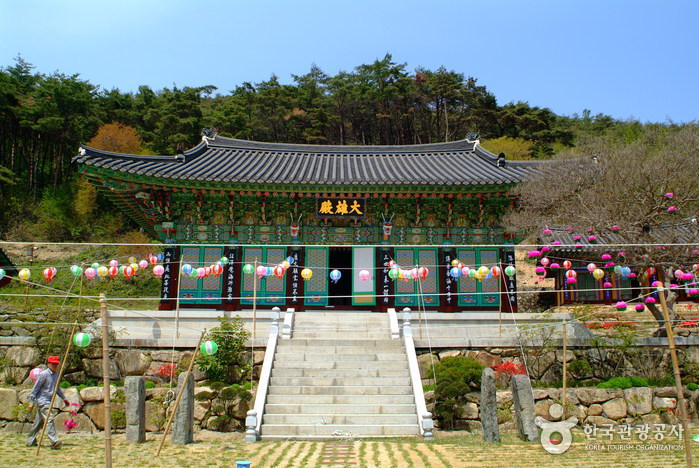E-Mart - Gwangsan Branch [Tax Refund Shop] (이마트 광산)
9.3Km 2024-04-22
172, Saam-ro, Gwangsan-gu, Gwangju
-
Sigyeongjeong Pavilion (담양 식영정)
9.3Km 2025-01-08
Jigok-ri, Damyang-gun, Jeollanam-do
+82-61-380-2811
Designated as the top monument of Jeollanam-do, Sigyeongjeong Pavilion means a place where even the shadow of the moon can find a place to rest. As its name suggests, this pavilion is set in a lush and remote forested area. Countless number of scholars and writers have been attracted to this pavilion as a place of profound inspiration. The pavilion gained more fame from the legendary lyrics of Seongsanbyeolgok written by the poet Jeong Cheol. The elegant words of Kim Seongwon, a literary scholar, depict the scenic beauty of Seongsan Mountain as the seasons change.
Of all the pavilions situated at the basin of the Yeongsangang River the Sigyeongjeong Pavilion is said to be blessed with a breathtaking view from the side. The current building was restored in the early 1900s. At the Sigyeongjeong Pavilion there is the Buyongdang, a monument with the lyrics to the Seongsanbyeolgok Poem, and next to it an old library building called Jangseogak built to preserve the wooden blocks of Songgangjib, a book of poetry written by Jeong Cheol.
Pyeongchon Ceramics Workshop (평촌도예공방)
9.4Km 2024-11-14
77 Damanpyeongmu-gil, Buk-gu, Gwangju
The Pyeongchon Ceramics Workshop keeps the spirit of traditional Korean Buncheong pottery alive by offering an experiential learning space and hands-on programs that blend classic Korean and contemporary styles. Visitors can create unique pieces that capture the rustic beauty of tradition while keeping the modern flair.
Gwangju Pyeongchon Village (광주 평촌마을)
9.4Km 2025-08-12
15 Pyeongchon-gil, Buk-gu, Gwangju
+82-62-266-2287
Gwangju Pyeongchon Village, located north of Mudeungsan Mountain, is a cozy farming village made up of four villages Dongrim, Daman, Woosung, and Dangmoe. The village still has an excellence natural preservation, growing environmental-friendly rice in the fields and Punamcheon stream that runs through the middle of the village is home to fireflies and otters. The village also keeps the tradition of making pottery as the village was the place that made grayish-blue-powdered celadon during the Joseon dynasty. The village street corner offers visitors to Mudeungsan Mountain a place to rest with Mudol-gil shelter and Bandi lodging.
Innisfree - Gwangju Wolgok Branch [Tax Refund Shop] (이니스프리 광주 월곡점)
9.4Km 2024-04-23
256, Saam-ro, Gwangsan-gu, Gwangju
-
Manyeonsa Temple - Hwasun (만연사(화순))
9.5Km 2020-03-27
367, Jingak-ro, Hwasun-gun, Jeollanam-do
+82-61-374-2112
Manyeonsa Temple is known to have been built in 1208, the fourth year of King Heejong’s (r. 1204-1211) reign during the Goryeo dynasty.
It is said that Manyeonsa Temple was constructed by Great Monk Manyeon after he dreamt of 16 nahans, Buddha’s disciples, preparing to build a temple to preserve Buddha’s statue when taking a short nap during his journey back to Songwangsa Temple in Jogyesan Mountain from Wonhyosa Temple in Mudeungsan Mountain. When he awoke from his nap, he noticed that snow had completely covered his nearby surroundings except for the exact spot where he lied down, which remained so warm that snow had melted and steam was rising from the ground. He then settled in the area by building a dugout where he continued to practice asceticism and later built Manyeonsa Temple.
The temple was partially destroyed during the Korean War (1950) and restoration efforts were made in 1978.
Lotte Mart - ToysRus Suwan Branch [Tax Refund Shop] (롯데마트 토이저러스수완점)
9.5Km 2024-04-16
3F & 4F, 98, Jangsin-ro, Gwangsan-gu, Gwangju
-
MLB - Lotte Suwan Branch [Tax Refund Shop] (MLB 롯데수완)
9.5Km 2024-04-17
1F, 98, Jangsin-ro, Gwangsan-gu, Gwangju
-
Tandy - Lotte Suwan Branch [Tax Refund Shop] (탠디 롯데수완)
9.5Km 2024-04-23
124, Singomae-ro, Giheung-gu, Yongin-si, Gyeonggi-do
-
Fashion Gallery - Lotte Gwangju Suwan Branch [Tax Refund Shop] (패션갤러리 롯데 광주수완점)
9.5Km 2024-04-18
98, Jangsin-ro, Gwangsan-gu, Gwangju
-
![E-Mart - Gwangsan Branch [Tax Refund Shop] (이마트 광산)](http://tong.visitkorea.or.kr/cms/resource/86/2886986_image2_1.jpg)



![Innisfree - Gwangju Wolgok Branch [Tax Refund Shop] (이니스프리 광주 월곡점)](http://tong.visitkorea.or.kr/cms/resource/75/2886975_image2_1.jpg)

![Lotte Mart - ToysRus Suwan Branch [Tax Refund Shop] (롯데마트 토이저러스수완점)](http://tong.visitkorea.or.kr/cms/resource/41/2886941_image2_1.jpg)
![MLB - Lotte Suwan Branch [Tax Refund Shop] (MLB 롯데수완)](http://tong.visitkorea.or.kr/cms/resource/44/2886944_image2_1.jpg)
![Tandy - Lotte Suwan Branch [Tax Refund Shop] (탠디 롯데수완)](http://tong.visitkorea.or.kr/cms/resource/48/2886948_image2_1.jpg)
![Fashion Gallery - Lotte Gwangju Suwan Branch [Tax Refund Shop] (패션갤러리 롯데 광주수완점)](http://tong.visitkorea.or.kr/cms/resource/56/2886956_image2_1.jpg)
 English
English
 한국어
한국어 日本語
日本語 中文(简体)
中文(简体) Deutsch
Deutsch Français
Français Español
Español Русский
Русский